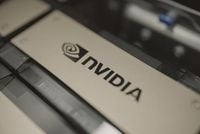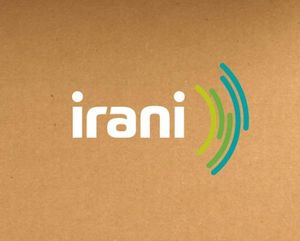On April 15, 2025, tensions escalated between the United States and China, marking a significant turn in the ongoing trade conflict. Reports emerged that China had instructed its airlines to cease accepting Boeing aircraft, a move that sent ripples through the aviation and tech industries. In retaliation, the U.S. government swiftly imposed restrictions on the sale of Nvidia chips to China, a decision that Nvidia estimates could lead to billions in losses.
Nvidia, a leading American chipmaker, is now bracing for significant write-offs, with the company projecting a loss of approximately $5.5 billion in the current quarter due to the newly imposed licensing restrictions. Analysts from Bloomberg Intelligence predict that the company's sales could decrease by an alarming $14 to $18 billion as a direct result of these measures. If these restrictions persist, Nvidia may only generate a "low to medium single-digit percentage" of its revenue from AI chips in China, a stark contrast to its previous performance.
Despite the grim outlook, Nvidia's leadership remains optimistic. CEO Jensen Huang announced plans to invest up to $500 billion in the production of AI components in the United States over the next four years. This ambitious initiative aims to bolster Nvidia's presence in the domestic market while navigating the turbulent waters of international trade. Huang's strategy includes developing alternatives to its previous reliance on the Chinese market, as the company seeks to adapt to the changing geopolitical landscape.
On April 16, 2025, Wall Street analysts weighed in on Nvidia's stock performance, which had plummeted by 6.9% at the New York opening. Despite this downturn, many analysts maintained their price targets for the stock, suggesting a potential rebound in the future. Morgan Stanley, for instance, kept its "Overweight/Attractive" rating with a price target of $162, while Citigroup and Wedbush also upheld their ratings of "Outperform" with targets of $150 and $175, respectively. Evercore ISI and BNP Paribas Exane echoed similar sentiments, maintaining their targets at $190 and $170. Jefferies rated the stock as a "Buy" with a price target of $185, while Raymond James lowered its target from $170 to $150 but retained a "Strong Buy" rating.
The mixed reactions from analysts reflect a broader uncertainty in the market. Many speculate that a resolution between the U.S. and China could emerge in the coming weeks, potentially alleviating some of the pressures on Nvidia and other companies affected by the trade war.
As the situation unfolds, Nvidia faces not only the immediate challenges posed by the chip restrictions but also the long-term implications of the U.S. government's tariff policies. President Trump’s aggressive stance on tariffs has already begun to weigh heavily on Nvidia's operations, with the company now facing the prospect of losing a substantial portion of its revenue from China, which has shrunk from 20% to about 10% of its sales. Analysts at Morningstar have even revised their fair value estimate for Nvidia's stock downward from $130 to $125, citing these significant revenue losses.
Moreover, the ripple effects of these trade tensions have been felt across global markets. On April 16, 2025, British, European, and Asian stock markets trended lower, with the Stoxx Europe 600 Index falling by approximately 1%. Investors reacted negatively to the news of Nvidia's potential losses, which could amount to as much as $5.5 billion. This negative sentiment extended to other semiconductor companies, with Dutch supplier ASML seeing its shares drop by more than 6% in response to the growing uncertainty.
In the U.S., futures for the S&P 500 indicated a largely neutral opening, but contracts for the technology-heavy Nasdaq-100 index fell by over 1%. The market's apprehension was further compounded by the announcement that tariffs on China had now reached a staggering 245%, raising concerns about the broader implications for supply chains and corporate profits.
As the U.S. dollar continued its decline against the euro, trading at 0.87911 EUR, the yield on 30-year U.S. Treasury bonds remained stable, reflecting ongoing investor caution. Derek Halpenny, Head of Research at MUFG, noted that the market for U.S. Treasuries was behaving as expected, with lower yields indicating a fragile sentiment among investors.
With the next meeting of the European Central Bank (ECB) scheduled for April 17, 2025, analysts are closely monitoring the situation. The renewed sell-off in global markets and the latest inflation data are putting pressure on central banks, particularly the ECB and the Bank of England, to consider interest rate cuts. Nathaniel Casey, an investment strategist at Evelyn Partners, suggested that ongoing inflation concerns, exacerbated by President Trump’s tariffs, could lead to upward pressure on prices.
In summary, Nvidia finds itself at a critical juncture, grappling with the dual challenges of trade restrictions and shifting market dynamics. While the company has ambitious plans for domestic investment, the immediate future remains uncertain as it navigates the complexities of international relations and evolving market conditions. Investors and analysts alike will be watching closely to see how these developments unfold and what they mean for Nvidia's long-term prospects.







